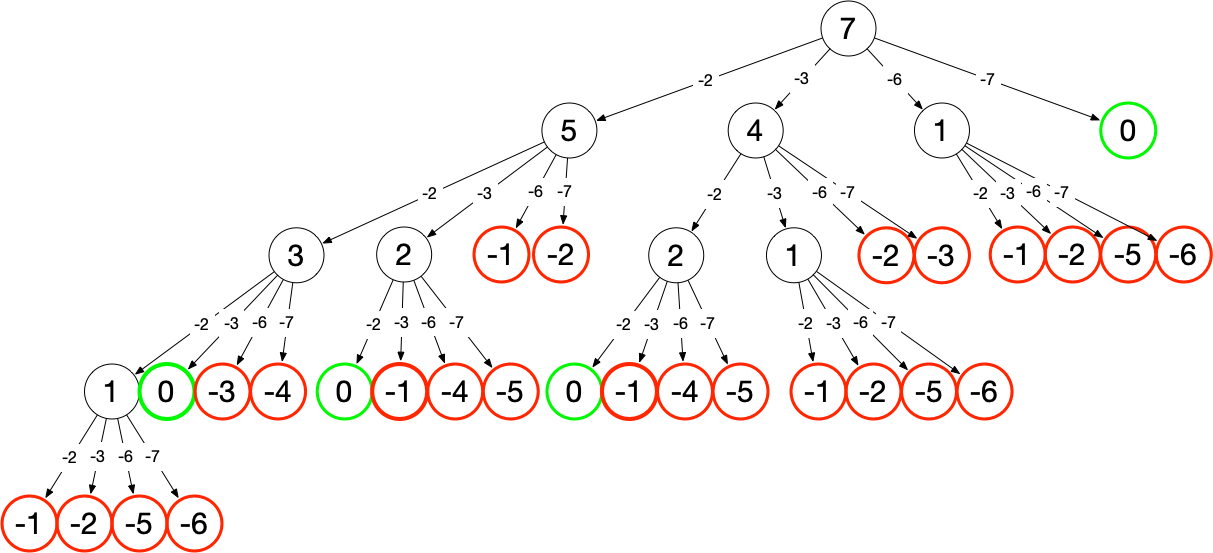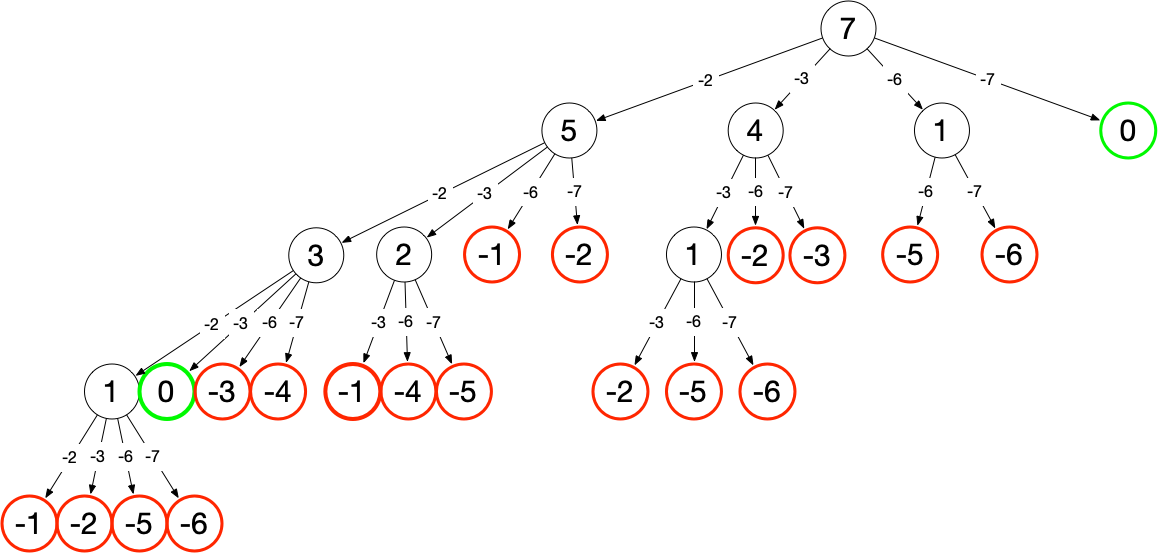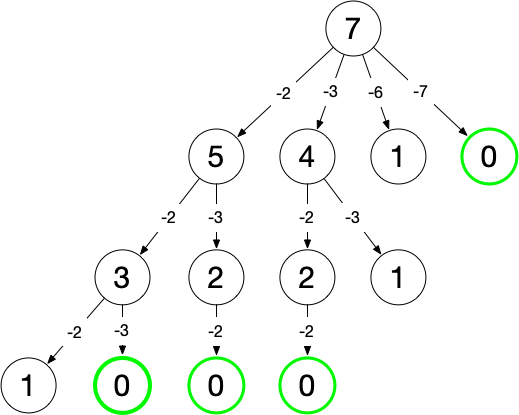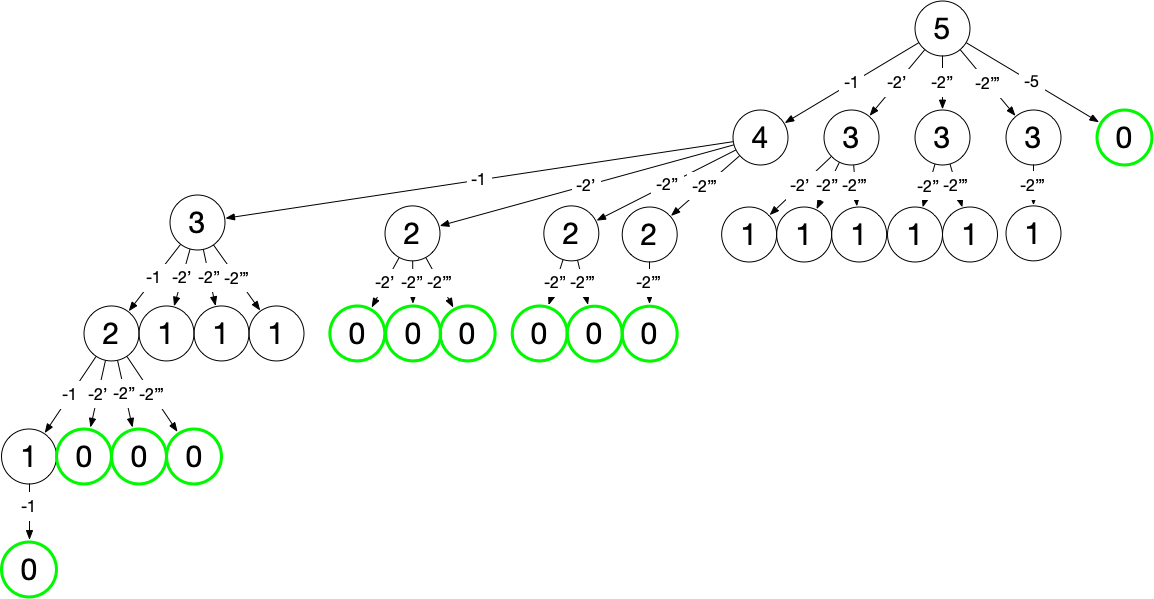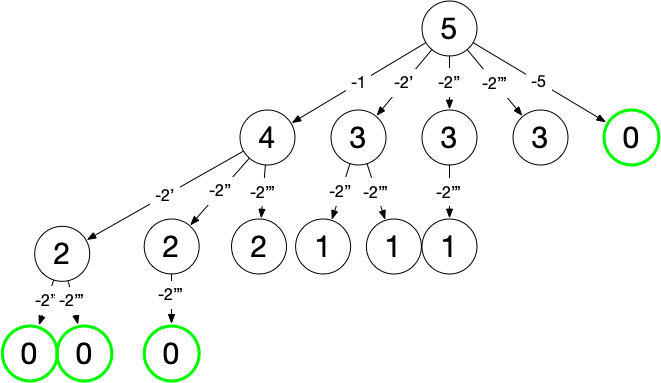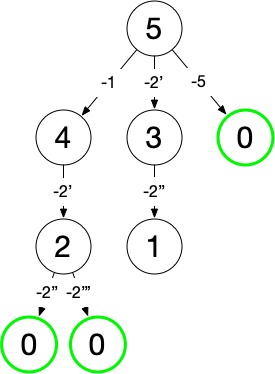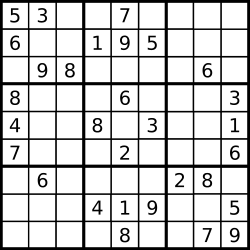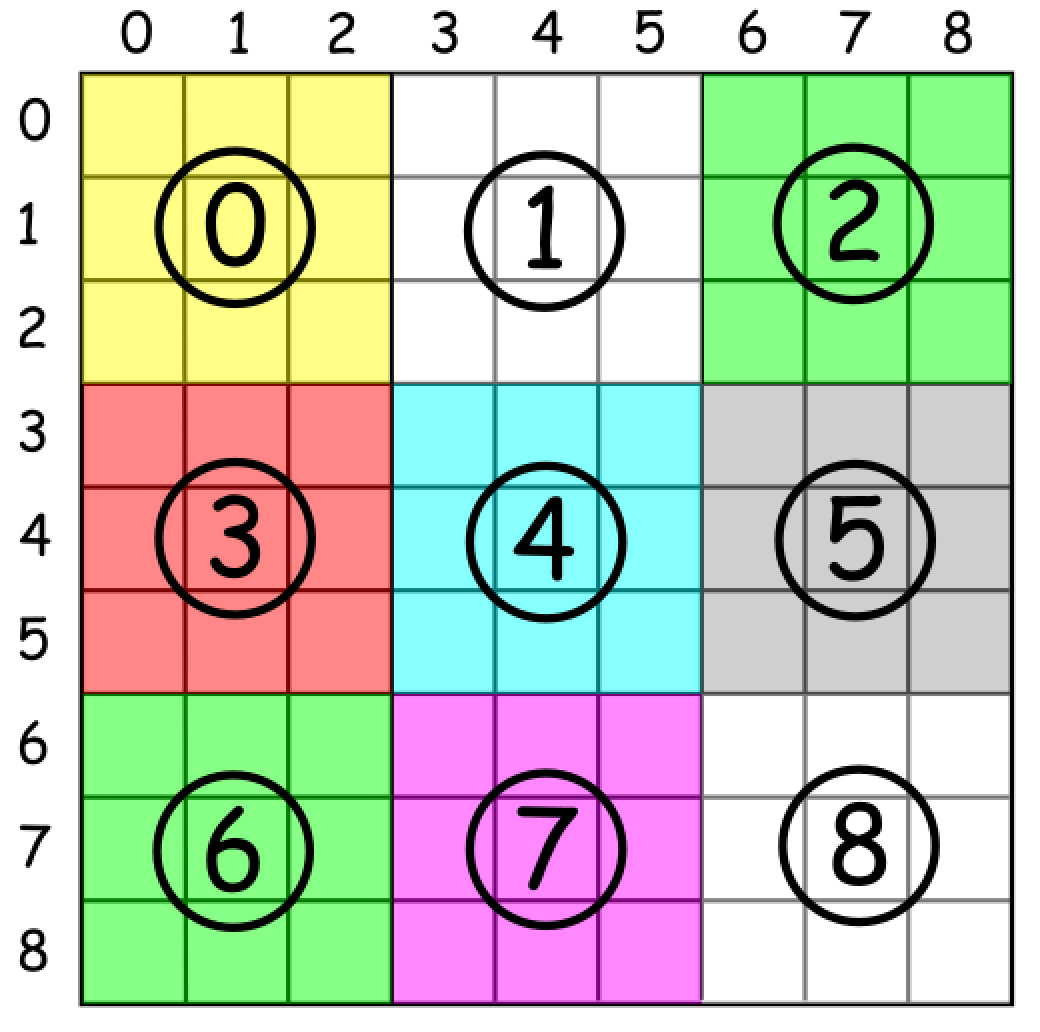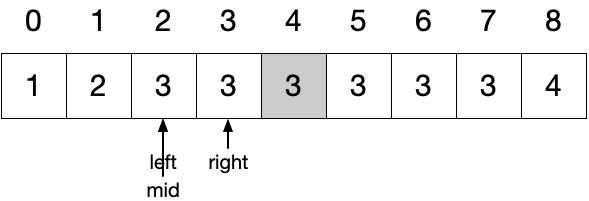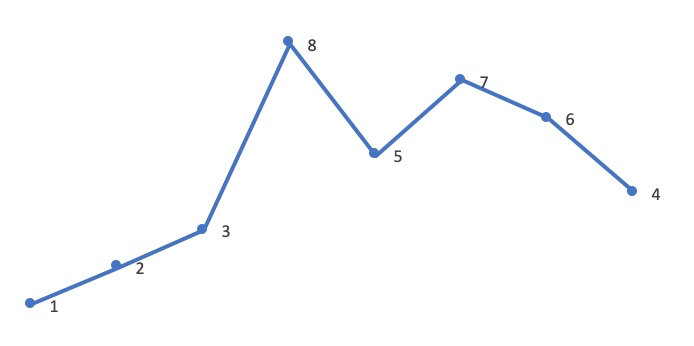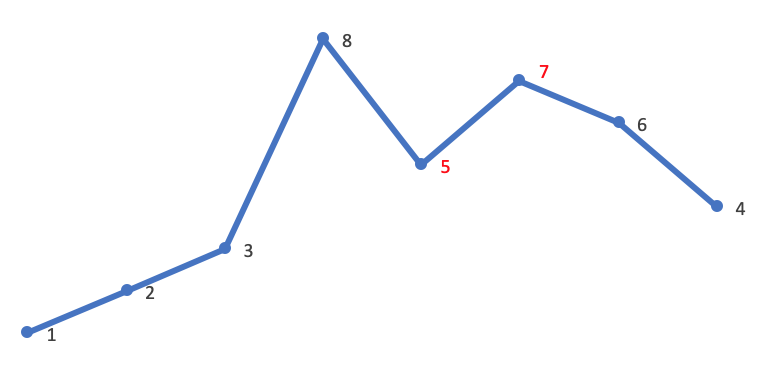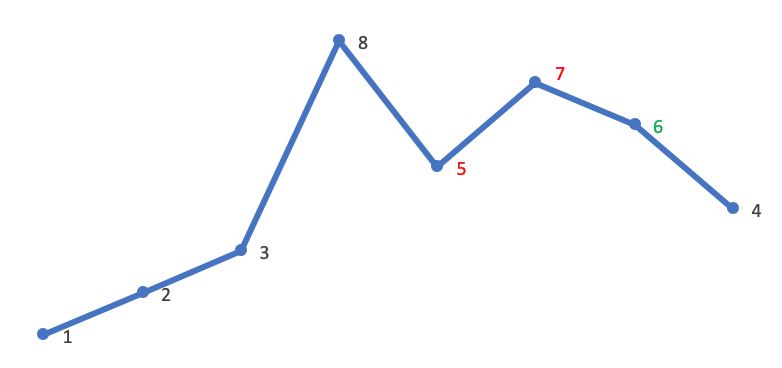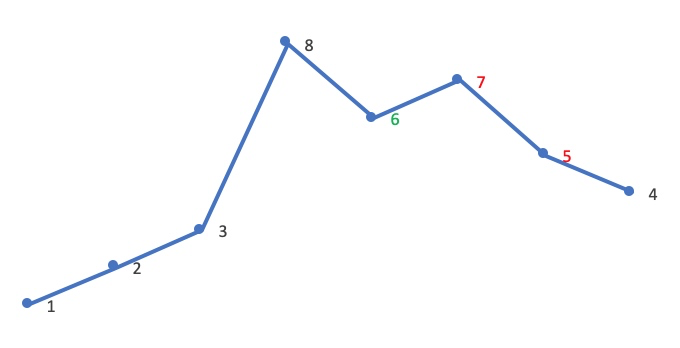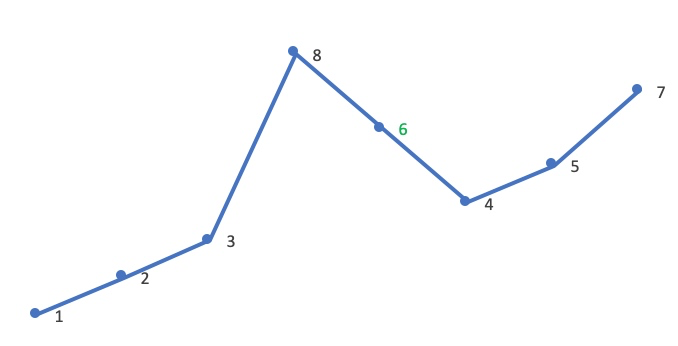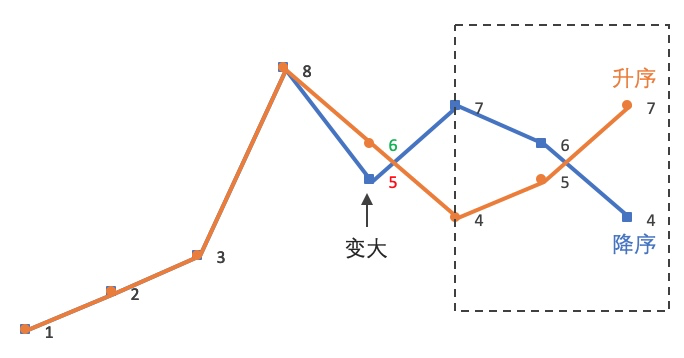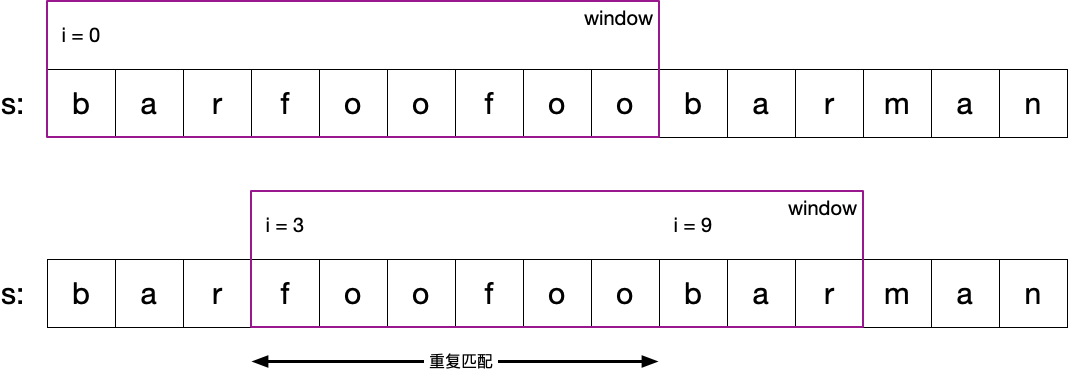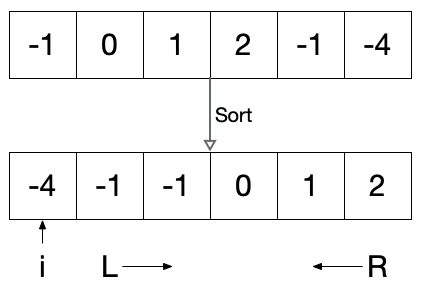概念
将数组视为哈希表,哈希函数为数组元素与数组索引之间的映射。
例题 1(剑指 offer #03)
找出数组中重复的数字。
在一个长度为 n 的数组 nums 里的所有数字都在 0~n-1 的范围内。数组中某些数字是重复的,但不知道有几个数字重复了,也不知道每个数字重复了几次。请找出数组中任意一个重复的数字。
示例 1:
输入:
[2, 3, 1, 0, 2, 5, 3]
输出: 2 或 3
限制:
2 <= n <= 100000
题解
将数组中各元素放至与与元素值相等的索引处(即将数组视为哈希表,哈希函数为 f(nums[i]) = nums[i]),在交换过程中若发现目标位置已有满足条件的值则说明遇到了重复:
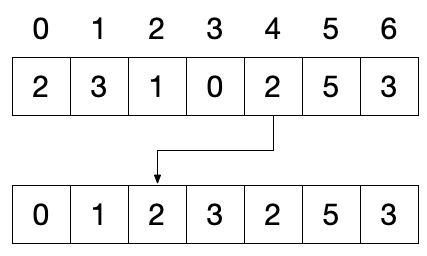
当遍历至 4 位置处的 2 时发现目标位置已有 2,说明 2 发生了重复。
1 | class Solution { |
例题 2 (LeetCode #41)
给你一个未排序的整数数组,请你找出其中没有出现的最小的正整数。
示例 1:
输入: [1, 2, 0]
输出: 3
示例 2:
输入: [3, 4, -1, 1]
输出: 2
示例 3:
输入: [7, 8, 9, 11, 12]
输出: 1
提示:
你的算法的时间复杂度应为 O(n) ,并且只能使用常数级别的额外空间。
题解
本题难在限制了时间复杂度为 O(n) 且常数级别的额外空间,利用排序算法时间复杂度最低为 O(logn) ,不符合条件。
由题意可知,输出的范围为 [1, n + 1] ,将数组视为哈希函数为 f(nums[i]) = nums[i] - 1 的哈希表将数组重新排布。再遍历数组并判断各元素是否满足 nums[i] == i + 1 的对应关系,若不满足则数组中未出现的最小整数为 i + 1 ,若数组中元素全部满足条件则最小整数即为数组长度加 1。
1 | class Solution { |
